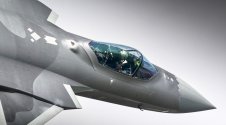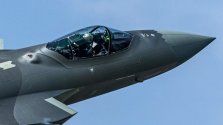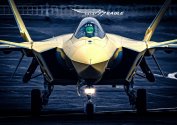You are using an out of date browser. It may not display this or other websites correctly.
You should upgrade or use an alternative browser.
You should upgrade or use an alternative browser.
J-20 5th Generation Fighter VII
- Thread starter siegecrossbow
- Start date
- Status
- Not open for further replies.
thank you!
Is the DAS ostensibly absent on the J-20S, or just not yet installed?J-20S & J-20J-20
View attachment 93564
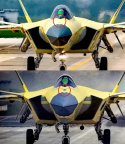
Very likely, JF-17 has the vent on the upper side of its inlet. I have also read a research paper by Pakistani researcher on the matter.I had a speculation about those hexagons on the inlets: The forward ones seem to be just a perforated region of the skin. There's a meme that DSIs perform optimally in a narrower flight regime and at slower speeds than diverter plates. Assuming this has any accuracy, I wonder if the structures are there to expand the DSI's optimal envelope by venting excess pressure at higher flight speeds. This is supported by the observation that the "vents" are placed symmetrically on both inlets.

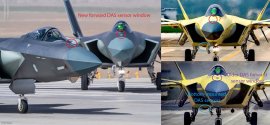
There are two different types of forward DAS windows on J-20. It is possible that the two-seater variant has the newer, smaller forward window. We also know that DAS hasn't been removed on the two-seater variant still retains the small bump on the bottom of the aircraft, which houses two of the other DAS sensors.
Actually, upon, closer inspection, it appears that the forward window may have been removed, and that the object I circled on the two-seater is just the datalink antenna? Either way, the two-seater still had the bump on the bottom of the aircraft which would normally house two of the DAS apertures, so I think that a serial two-seater aircraft would probably has DAS, while it has just been removed from the prototypes. I'm just making assumptions based on what I can see on the aircraft.View attachment 94314
There are two different types of forward DAS windows on J-20. It is possible that the two-seater variant has the newer, smaller forward window. We also know that DAS hasn't been removed on the two-seater variant still retains the small bump on the bottom of the aircraft, which houses two of the other DAS sensors.
Oh I would love to see that paper! As you may know I too have reached a similar conclusion. Would be nice to see what the physics actually looks like for this, rather than take guesses based on theory.Very likely, JF-17 has the vent on the upper side of its inlet. I have also read a research paper by Pakistani researcher on the matter.

One might control flow in while the other might control flow out. If you have both you essentially have a system that can do active regulation.I had a speculation about those hexagons on the inlets: The forward ones seem to be just a perforated region of the skin. There's a meme that DSIs perform optimally in a narrower flight regime and at slower speeds than diverter plates. Assuming this has any accuracy, I wonder if the structures are there to expand the DSI's optimal envelope by venting excess pressure at higher flight speeds. This is supported by the observation that the "vents" are placed symmetrically on both inlets.
Unfortunately, I did not save it when I first read it years ago. I think it may be this one, but it is not available for download or viewing anymore.Oh I would love to see that paper! As you may know I too have reached a similar conclusion. Would be nice to see what the physics actually looks like for this, rather than take guesses based on theory.
If my memory serves me right, the paper that I read did not say "JF-17", but the diagram of the bump in it was certainly of JF-17.
plawolf
Lieutenant General
This line of thinking sounds vaguely familiar. 
Post in thread 'J-20 5th Gen Fighter Thread IV (Closed to posting)'
J-20 5th Gen Fighter Thread IV (Closed to posting)
Post in thread 'J-20 5th Gen Fighter Thread IV (Closed to posting)'
J-20 5th Gen Fighter Thread IV (Closed to posting)
A little late to the party, but I think the hexagon meshes on the side of the intakes covers an intake and an exhaust which are used for boundary layer control inside the intake.
There would be sliding doors, which may or may not also be covered by a similar mesh screen, on the inside wall of the intake.
By opening and closing one or both of those doors, partially or fully, the J20's intake would be able to create pressure fields that push the boundary lay airflow forwards or backwards when it first hit the outside wall of the intake, which would then feed through to affect where and when the shockwaves form inside the intake, which in turn determines at what speed the airflow hits the compressor blades.
Its a pretty ingenious design, which should allow the J20's fixed DSI to achieve similar supersonic performance as traditional variable geometry intakes while retaining all the RCS advantages of the DSI. Its not a perfect solution, because the movable doors and mechanisms needed for them would surrender much of the weight and maintenance savings a basic first gen DSI would have over a variable geometry intake, but I think the supersonic performance gains are viewed as well worth the cost compared to a basic DSI.
- Status
- Not open for further replies.

